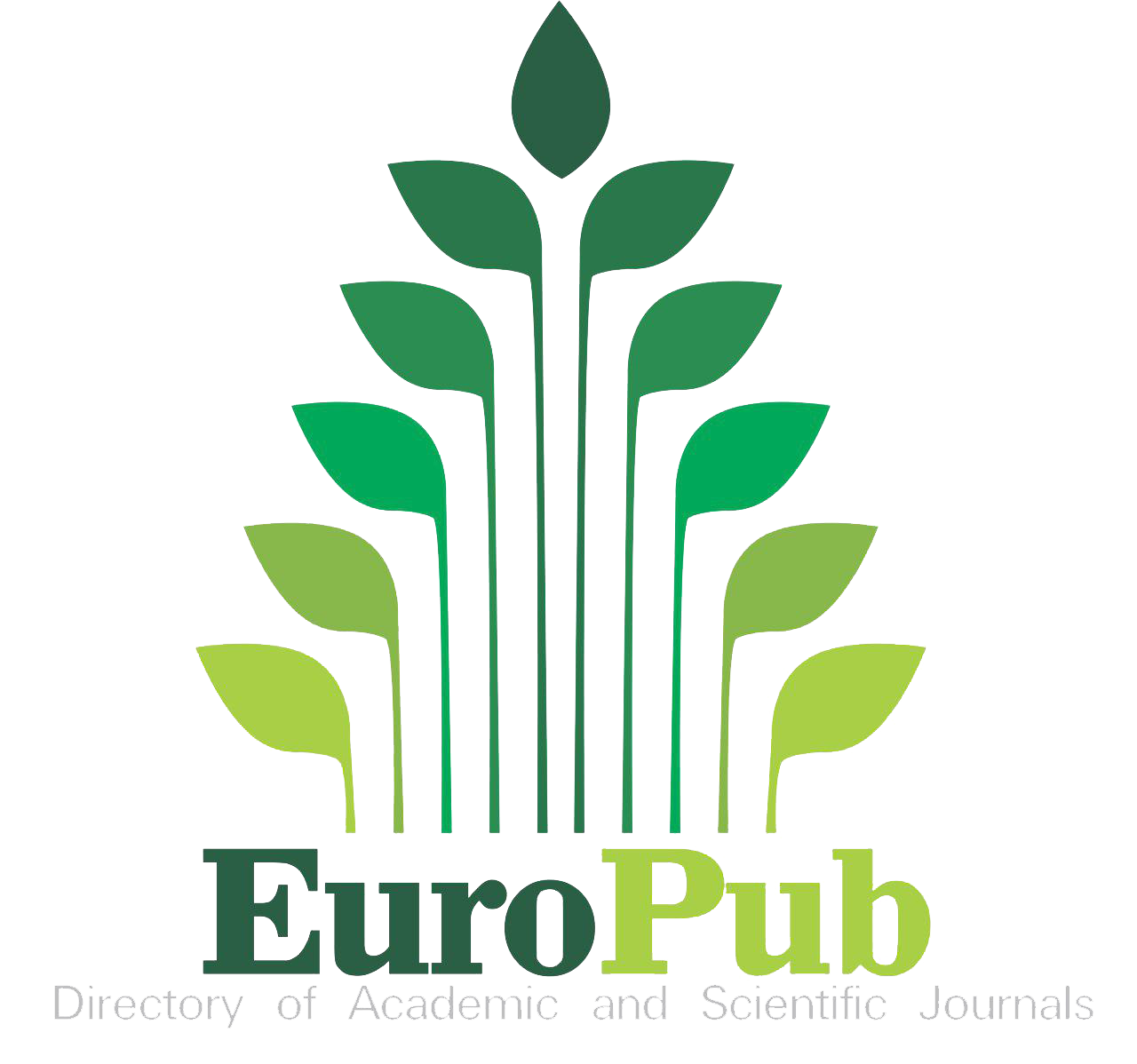Ctrl-X, Ctrl-C y Ctrl-V en Dermatología Veterinaria: el trasplante de microbiota cutánea como un enfoque prometedor para perros con reacciones cutáneas adversas a los alimentos
DOI:
https://doi.org/10.24215/15142590e080Palabras clave:
Dermatitis atópica, intolerancia alimentaria, microbiota, piel, transferenciaResumen
La posibilidad de influir en el microbioma cutáneo para tratar trastornos de la piel abre una nueva vía de terapéutica. El objetivo del presente trabajo fue evaluar la eficacia del trasplante de microbiota cutánea (sMt) para establecer las reacciones cutáneas adversas a los alimentos (caFr) en perros. Se realizó un sMt heterólogo no enriquecido utilizando tiras Nivea Skin Refining Clear-Up Strips (N-cUs). La microbiota bacteriana de las muestras de piel fue analizada mediante secuenciación de próxima generación del gen 16S rRNA. Otros biomarcadores relevantes permitieron establecer la puntuación del prurito (VAS), CADESI-04 y el análisis corneométrico epidérmico (hyidratación y pH). El gen 16S rRNA clasificó con éxito la presencia de un aumento de Faecalibacterium (0 a 1,9%), Peptoclostridium (5,49 % a 9,11 %) y Collinsella (0,65 % a 8,91 %), mientras que se observó una disminución de Fusobacterium (19,16 % a 9,06 %), Porphyromonas (8,75 % a 0,13 %), Streptococcus (1,63 % a 0,14 %) y Staphylococcus (1,09 % a 0,49 %), antes y después del sMt. El tratamiento con sMt controló eficazmente los signos clínicos y redujo significativamente la mediana del prurito VAS (6,5 vs. 2) y las puntuaciones CADESI-04 (74,50±22,62 a 19,30±11,30) (p<0,001). Además, los valores de pH e hidratación de la piel mejoraron (p<0,001) después de la sMt. La sMt heteróloga y no enriquecida con N-cUs podría ser responsable de la recuperación clínica observada en este estudio.
Referencias
Bay L, Barnes CJ, Fritz BG, Thorsen J, Restrup MEM, Rasmussen L, Sørensen JK, Hesselvig AB, Odgaard A, Hansen AJ, Bjarnsholt T. 2020. Universal dermal microbiome in human skin. MBio. 11(1):e02945-19. https://doi.org/10.1128/mbio.02945-19
Callewaert C, Knödlseder N, Karoglan A, Güell M, Paetzold B. 2021. Skin microbiome transplantation and manipulation: Current state of the art. Computational and Structural Biotechnology Journal. 19:624-31. https://doi.org/10.1016/j.csbj.2021.01.001
Cho SS, Finocchiaro ET. 2010. Handbook of prebiotics and probiotics ingredients. U. S. A, CRC Press. Retrieved.
Costello EK, Lauber CL, Hamady M, Fierer N, Gordon JI, Knight R. 2009. Bacterial community variation in human body habitats across space and time. Science. 326:1694-7. https://doi.org/10.1126/science.1177486
D’hoe K, Vet S, Faust K, Moens F, Falony G, Gonze D, Lloréns-Rico V, Gelens L, Danckaert J, De Vuyst L, Raes J. 2018. Integrated culturing, modeling and transcriptomics uncovers complex interactions and emergent behavior in a three-species synthetic gut community. Elife. 7:e37090. https://doi.org/10.7554/eLife.37090
Dréno B, Araviiskaia E, Berardesca E, Gontijo G, Sanchez Viera M, Xiang LF, Martin R, Bieber T.2016. Microbiome in healthy skin, update for dermatologists. Journal of the European Academy of Dermatology and Venereology. 30(12):2038-47. https://doi.org/10.1111/jdv.13965
Esteban J, Nieto E, Calvo R, Fernández-Robals R, Valero-Guillén PL, Soriano F. 1999. Microbiological characterization and clinical significance of Corynebacteriumamycolatum strains. European Journal of Clinical Microbiology & Infectious Diseases. 18(7):518-21. https://doi.org/10.1007/s100960050336
Grice EA, Kong HH, Conlan S, Deming CB, Davis J, YoungAC, NISC Comparative Sequencing Program, Bouffard GG, Blakesley RW, Murray PR, Green ED, Turner ML, Segre JA. 2009. Topographical and temporal diversity of the human skin microbiome. Science. 324(5931):1190-2. https://doi.org/10.1126/science.1171700
Grice EA, Kong HH, Renaud G, Young AC, NISC Comparative Sequencing Program, Bouffard GG, Blakesley RW, Wolfsberg TG, Turner ML, Segre JA. 2008. A diversity profile of the human skin microbiota. Genome Research. 18(7):1043-50. https://doi.org/10.1101/gr.075549.107
Grice EA, Segre JA. 2011. The skin microbiome. Nature Reviews Microbiology. 9:244-53. https://doi.org/10.1038/nrmicro2537
Gunal M, Yayli G, Kaya O, Karahan N, Sulak O. 2006. The effects of antibiotic growth promoter, probiotic or organic acid supplementation on performance, intestinal microflora and tissue of broilers. International Journal of Poultry Science. 5:149-55. https://doi.org/10.9323/ijps.2006.149.155
Hammond AM, Monir RL, Schoch JJ. 2021. The role of the pediatric cutaneous and gut microbiomes in childhood disease: A review. Seminars in Perinatology. 45(6):151452. https://doi.org/10.1016/j.semperi.2021.151452
Hoek M. v, Merks RMH. 2017. Emergence of microbial diversity due to cross-feeding interactions in a spatial model of gut microbial metabolism. BMC Systems Biology. 11(1):1-18. https://doi.org/10.1186/s12918-017-0430-4
Inoue H, Someno T, Kawada M, Ikeda D. 2010. Citric acid inhibits a bacterial ceramidase and alleviates atopic dermatitis in an animal model. The Journal of Antibiotics. 63(10):611-13. https://doi.org/10.1038/ja.2010.91
Liang X, Ou C, Zhuang J, Li J, Zhang F, Zhong Y, Chen Y. 2021. Interplay Between Skin Microbiota Dysbiosis and the Host Immune System in Psoriasis: Potential Pathogenesis. Frontiers in Immunology. 12:764384. https://doi.org/10.3389/fimmu.2021.764384
Louis P, Flint HJ. 2017. Formation of propionate and butyrate by the human colonic microbiota. Environmental Microbiology. 19(1):29-41. https://doi.org/10.1111/1462-2920.13589
Martín A, Sierra MP, González JL, Arévalo MÁ. 2004. Identification of allergens responsible for canine cutaneous adverse food reactions to lamb, beef and cow's milk. Veterinary Dermatology. 15(6):349-56. https://doi.org/10.1111/j.1365-3164.2004.00404.x
Morris BE, Henneberger R, Huber H, Moissl-Eichinger C. 2013. Microbial syntrophy: interaction for the common good. FEMS Microbiology Reviews. 37(3):384-406. https://doi.org/10.1111/1574-6976.12019
Nakatsuji T, Chiang HI, Jiang SB, Nagarajan H, Zengler K, Gallo RL. 2013. The microbiome extends to subepidermal compartments of normal skin. Nature Communications. 4:1431. https://doi.org/10.1038/ncomms2441
Ogai K, Nagase S, Mukai K, Iuchi T, Mori Y, Matsue M, Sugitani K, Sugama J, Okomoto S. 2018. A comparison of techniques for collecting skin microbiome samples: swabbing versus tape-stripping. Frontiers in Microbiology. 9:2362. https://doi.org/10.3389/fmicb.2018.02362
Olivry T, Mueller RS. 2019.Critically appraised topic on adverse food reactions of companion animals (7): signalment and cutaneous manifestations of dogs and cats with adverse food reactions. BMC Veterinary Research. 15(1):140. https://doi.org/10.1186/s12917-019-1880-2
Olivry T, Saridomichelakis M, Nuttall T, Bensignor E, Griffin CE, Hill PB, International Committee on Allergic Diseases of Animals (ICADA).2014. Validation of the Canine Atopic Dermatitis Extent and Severity Index (CADESI)-4, a simplified severity scale for assessing skin lesions of atopic dermatitis in dogs. Veterinary Dermatology. 25(2):77-e25. https://doi.org/10.1111/vde.12107
Perin B, Addetia A, Qin X. 2019. Transfer of skin microbiota between two dissimilar autologous microenvironments: A pilot study. PLoS One. 14(12):e0226857. https://doi.org/10.1371/journal.pone.0226857
Rodrigues Hoffmann A, Patterson AP, Diesel A, Lawhon SD, Ly HJ, Elkins Stephenson C, Mansell J, Steiner JM, Dowd SE, Olivry T, Suchodolski JS. 2014. The skin microbiome in healthy and allergic dogs. PloS One. 9(1):e83197. https://doi.org/10.1371/journal.pone.0083197
Rondelli MCH, Oliveira MCdeC, daSilva FL, Palacios Junior RJG, Peixoto MC, Carciofi AC, Tinucci-Costa M.2015.A retrospective study of canine cutaneous food allergy at a Veterinary Teaching Hospital from Jaboticabal, São Paulo, Brazil. Ciência Rural. 45(10):1819-25. https://doi.org/10.1590/0103-8478cr20140440
Rungjang A, Meephansan J, Payungporn S, Sawaswong V, Chanchaem P, Pureesrisak P, Wongpiyabovorn J, Thio HB. 2022. Skin Microbiota Profiles from Tape Stripping and Skin Biopsy Samples of Patients with Psoriasis Treated with Narrowband Ultraviolet B. Clinical, Cosmetic and Investigational Dermatology. 15:1767-1778. https://doi.org/10.2147/CCID.S374871
Russel JB, Diez-Gonzalez F. 1998. The effect of fermentation acids on bacterial growth. Advances in Microbial Physiology. 39:205-34. https://doi.org/10.1016/S0065-2911(08)60017-X
Rybníček J, Lau‐Gillard PJ, Harvey R, Hill PB. 2009. Further validation of a pruritus severity scale for use in dogs. Veterinary Dermatology. 20(2):115-22. https://doi.org/10.1111/j.1365-3164.2008.00728.x
Schaub B, Lauener R, von Mutius E. 2006. The many faces of the hygiene hypothesis. Journal of Allergy and Clinical Immunology. 117(5):969-78. https://doi.org/10.1016/j.jaci.2006.03.003
Su LC, Xie Z, Zhang Y, Nguyen KT, Yang J. 2014. Study on the antimicrobial properties of citrate-based biodegradable polymers. Frontiers in Bioengineering and Biotechnology. 2:23. https://doi.org/10.3389/fbioe.2014.00023
Tang S, Prem A, Tjokrosurjo J, Sary M, Van Bel MA, Rodrigues-Hoffmann A, Kavanagh M, Wu G, Van Eden ME, Kurumbeck JA. 2020. The canine skin and ear microbiome: A comprehensive survey of pathogens implicated in canine skin and ear infections using a novel next-generation-sequencing-based assay. Veterinary Microbiology. 247:108764. https://doi.org/10.1016/j.vetmic.2020.108764
Tizard IR, Jones SW. 2018. The microbiota regulates immunity and immunologic diseases in dogs and cats. The Veterinary Clinics of North America: Small Animal Practice. 48(2):307-22. https://doi.org/10.1016/j.cvsm.2017.10.008
Ural K, Erdoğan H, Erdoğan S. 2022. Heterologue skin microbiota transplantation for treatment of sarcoptic mange in two dogs with zoonotic transmission. Bozok Veterinary Sciences. 3(2):52-6. https://doi.org/10.58833/bozokvetsci.1207900
Ural K, Erdoğan H, Erdoğan S. 2023. Skin microbiota transplantation by Nivea Refining Clear-Up Strips could reverse erythema scores in dogs with atopic dermatitis: Novel strategy for skin microbiome manipulation. Turkiye Klinikleri Journal of Veterinary Sciences.14(1):11-7. https://doi.org/10.5336/vetsci.2022-93888
Zeeuwen PL, Boekhorst J, van den Bogaard EH, de Koning HD, van de Kerkhof PM, Saulnier DM, van Swam II, van Hijum SA, Kleerebezem M, Schalkwijk J, Timmerman HM. 2012. Microbiome dynamics of human epidermis following skin barrier disruption. Genome Biology. 13:R101. https://doi.org/10.1186/gb-2012-13-11-r101
Publicado
Número
Sección
Licencia
Derechos de autor 2024 Kerem Ural, Hasan Erdoğan, Songül Erdoğan

Esta obra está bajo una licencia internacional Creative Commons Atribución-NoComercial-SinDerivadas 4.0.
Los autores/as conservan los derechos de autor y ceden a la revista el derecho de la primera publicación, con el trabajo registrado con la licencia de atribución de Creative Commons, que permite a terceros utilizar lo publicado siempre que mencionen la autoría del trabajo y a la primera publicación en esta revista.

Analecta Veterinaria por Facultad de Ciencias Veterinarias se distribuye bajo una Licencia Creative Commons Atribución-NoComercial-SinDerivar 4.0 Internacional.




























